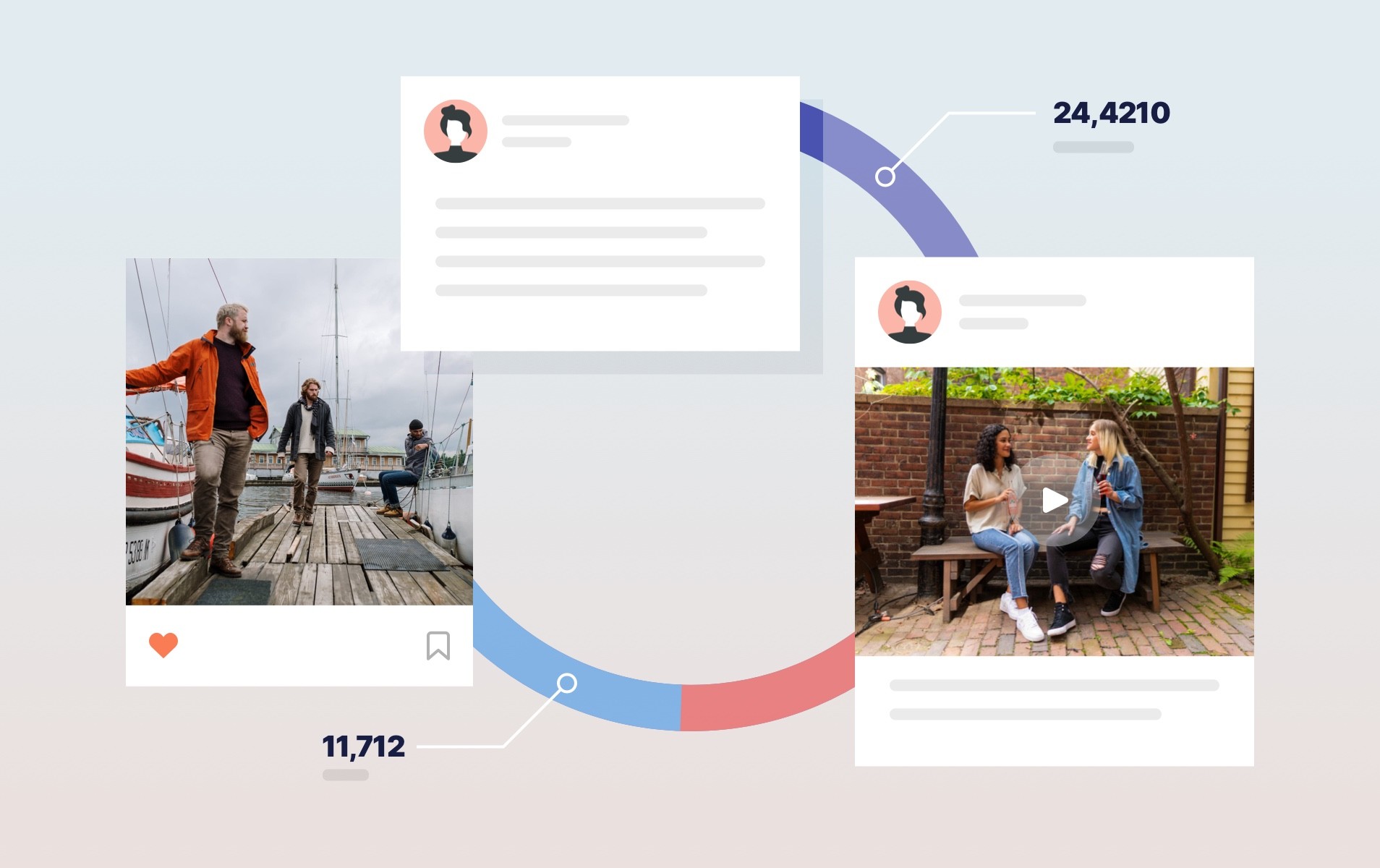How to Measure the Performance of Influencer Marketing Campaigns
How to accurately measure your influencer marketing campaign performance with the most efficient tools and process for brands and agencies.
What’s wrong with spreadsheets and screenshots?
Despite the advent of specialized tools and platforms, too many marketing departments still rely on the extremely manual process of using screenshots and spreadsheets to track their influencer marketing campaign statistics.
This is a bad idea for a number of reasons:
⚠️ Screenshots are outdated in seconds
There is no such thing as real-time data when you’re using screenshots to collect metrics. By the time it gets entered into your spreadsheet, it’s already old. Your “living, breathing” reporting setup is merely getting updated in fits and starts. This means you’re going to have to get (or request) new screenshots every time you want updated reporting.InfluenceKit can do this so much better by providing information that is truly real-time. Which leads us to our next point:
⚠️ Information flows really, really, really slowly
For a tech-based marketing channel like social media, reporting on influencer data can reach almost caveman-levels of slowness.
Your influencer has to capture the information you want (using screenshots, naturally), and then dump them into an email, where you get the numbers and manually enter them into a spreadsheet. By then, you’re probably extracting the information from the spreadsheet and putting it in a slide deck to present to the stakeholder.
Over and over and over again.
Just ask Stephie Predmore, Director of Influencer Marketing at Mediavine. “When it was time to pull together a report,” Stephie explains, “we were going through and pulling numbers from every single social media post and putting them into a spreadsheet. It was quite tedious.”

⚠️ Scattered storage
Unless you’re keeping a huge, mega-table that has metrics for ALL your campaigns with ALL your influencers across ALL channels (which is its own problem), your campaign data is going to be scattered across multiple drives or storage locations. And even if you manage to organize them into a single sub-folder, all that information is still going to be divided into individual files.
That’s like putting a hundred potted plants together in the same greenhouse and calling it a forest. It’s not. A true ecosystem is interconnected, with every piece a part of the whole. Data is the same way. You can’t get a proper perspective if you’re just looking at fragments.
⚠️ Hard to share
Let’s just go out and say it: spreadsheets are hideous. They’re ad hoc, utilitarian, and difficult to understand without a tour guide. You wouldn’t give a stakeholder – whether that’s a client or upper management – unlimited access to a spreadsheet. There’s just too much risk of misinterpreting the data.
Also, there’s no way for them to get an up-to-date picture of campaign performance unless you keep sending them file after file after file. Even then, they may not understand the true impact of the trends they’re seeing unless you explicitly point it out to them or over-engineer the spreadsheet.

⚠️ A deluge of data errors
A spreadsheet-based reporting process carries a high risk of erroneous data. Every single manual recording, transfer, or entry of information is a potential failure point where mistakes can be made:
Influencer takes or sends the wrong screenshot
Too much delay in getting the information (automatically out of date)
Error in data entry
Spreadsheet uses the wrong formula
All this and more could potentially ruin your influencer analytics. And when thousands of dollars are being spent on endorsements and sponsorships, and you need a clear picture of your influencer campaign ROI, the implications are enormous.
There is no such thing as real-time data when you’re using screenshots to collect metrics. By the time it gets entered into your spreadsheet, it’s already old.
According to Wendy Scherer, Social Media Strategist at Cabot Cheese, it was very difficult to get accurate numbers.
“We had these monster spreadsheets that were hardly ever one hundred percent up to date, and with pretty unreproducible numbers that didn't account for change over time,” Wendy explains.
How to effectively measure influencer marketing campaign performance
We’re not saying you can’t have a spreadsheet-based analytics process. You can, but it’s going to take a lot of work to do it right, and you have to understand the weaknesses of the system. Here are the best ways you can get a more accurate picture of your influencer marketing metrics.
1. Be very process-driven
A spreadsheet-based system has a lot of moving parts, and so you need to build a process that is as clear, low-friction, and airtight as possible. Eliminate any extra steps when gathering campaign data and reduce the number of people involved to the bare minimum.
Make sure the process is well-documented, and shared both internally and with every single one of your influencer partners. Update this document every so often as you learn more lessons and the environment in your organization changes.

2. Promote discipline, both internal and external
Manual processes are tiring and require a lot of attention, and it can be tempting to let things slide if you’ve had a long day or are really busy. It’s important to be understanding with your team and with your influencer partner, and to also encourage them to stay dedicated to the process.
Influencers are a bit more challenging to manage. Sometimes influencers won’t submit their stats on time (or at all). There are ways you can enforce compliance, like maybe making reporting a part of their contract. You could also have a frank discussion with them about your expectations for this partnership and how reporting will help ensure they’re getting compensated properly for their efforts.
3. Use an influencer marketing platform
Most of the problems we touched on above can be solved by adopting the right influencer marketing platform. You’ll be able to abandon manual information transfer and replace it with an automated solution streamlining the entire flow of information in every direction: from partner to marketing team to stakeholder.
Let's look at the ways an influencer marketing platform like InfluencerKit addresses these issues:



Conclusion
Influencer marketing is an exciting and vibrant field, and proving its value to upper management is possible – but only with an effective and scalable method of gathering performance KPIs.
If you’re one of those teams still using screenshots and spreadsheets to collect data and feed your analytics, we highly recommend reconsidering both your process and your tools. By upgrading to InfluenceKit, you can make your team more efficient and make your influencer marketing campaigns that much more successful.
Ready to see how painless reporting can be?
Our platform does so much of the grunt work for you, it almost feels like cheating 🤫
Get more data & better results from your influencer campaigns
Join thousands of influential brands optimizing their campaign results with InfluenceKit’s automated, accurate reporting


